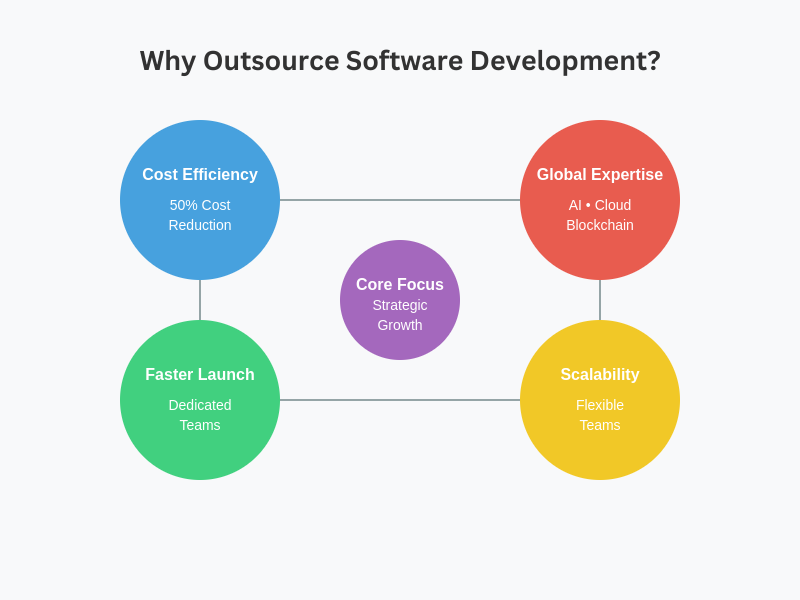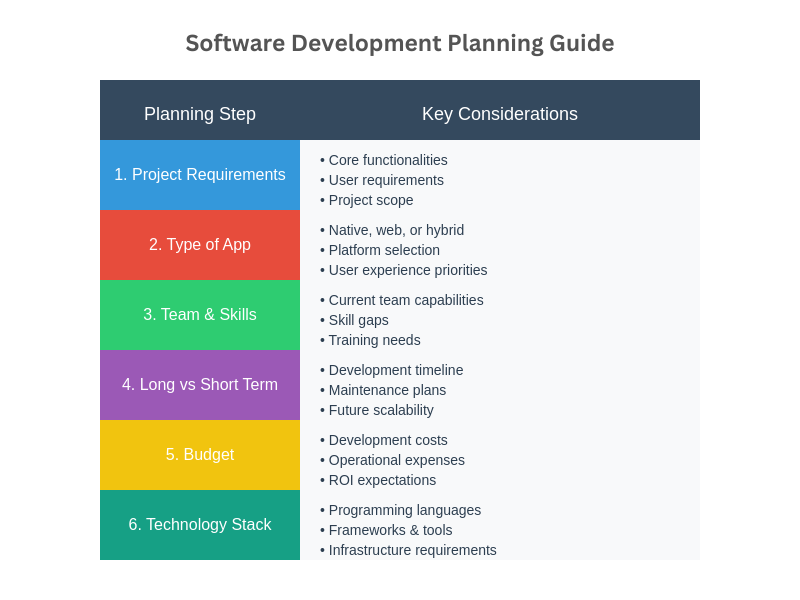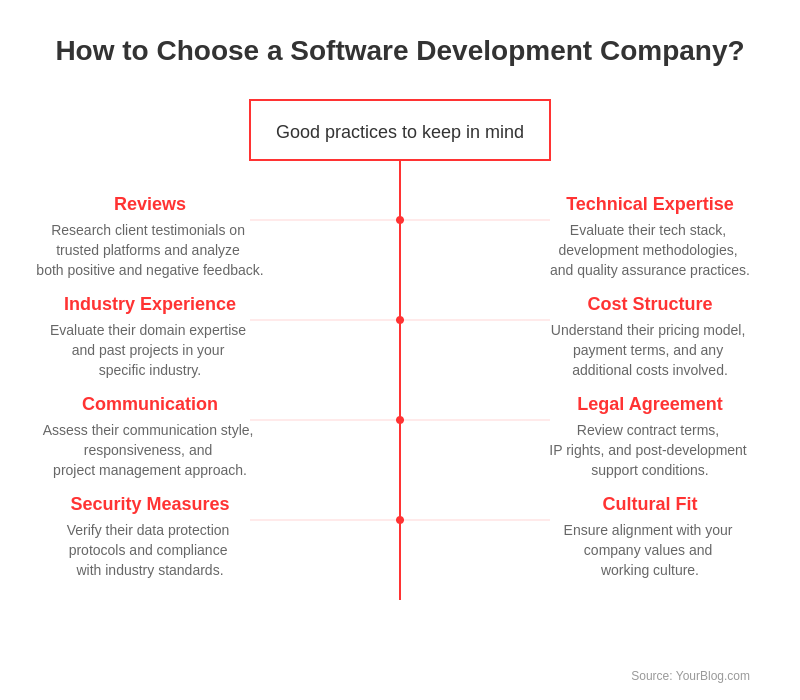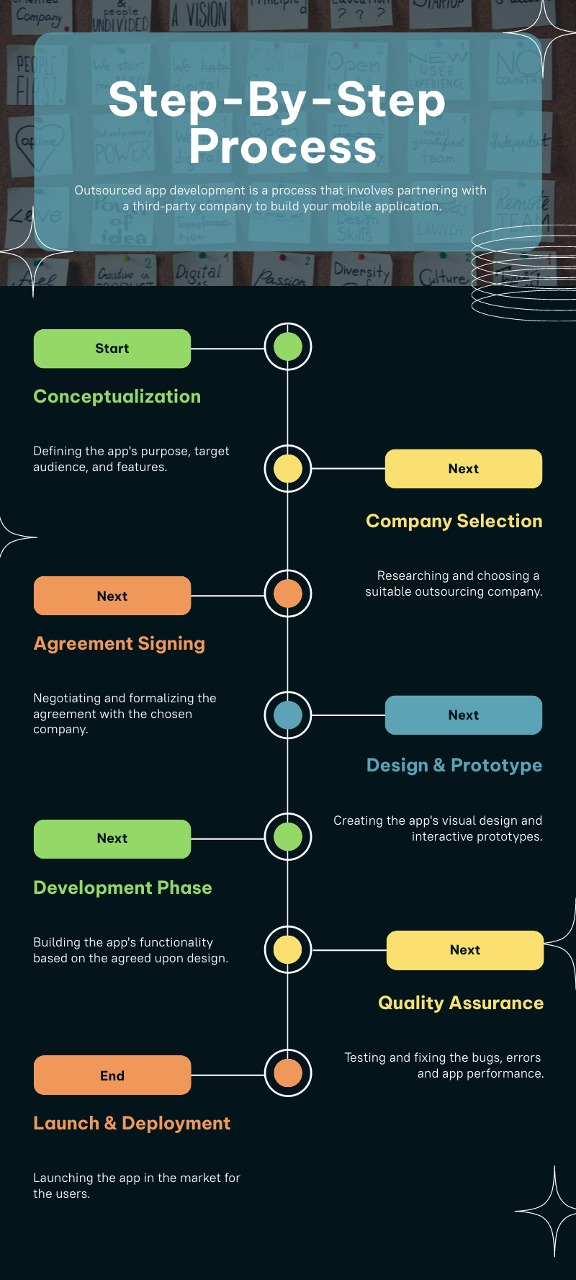Software development outsourcing has rapidly transformed from a business strategy to a fundamental norm for modern organizations. As we approach 2025, the increasing relevance of outsourcing can be attributed to reshaping businesses’ approach to technological innovation.
With technological advancements such as Artificial Intelligence (AI), blockchain, and cloud computing becoming core to software functionality, companies now look to outsource to access the highly skilled professionals required to stay competitive.
The rising demand for custom software development outsourcing services is also a direct result of the growing need for digital transformation. As businesses strive to improve operational efficiency, user experiences, and customer engagement, they realize that relying on in-house teams alone can limit their capabilities.
Outsourcing has become more than an option for decision-makers planning to develop business-centric software; it’s a strategic necessity. It allows companies to accelerate their time-to-market, bringing products and features to the market more quickly, critical in fast-paced industries.
What is the Growing Relevance of Outsourcing Software Development?

Outsourcing enables companies to collaborate with experts who can seamlessly integrate advanced technologies like AI and machine learning, ensuring that software is built with the most current and innovative capabilities. Beyond technological benefits, software mobile app development outsourcing also allows for cost-effective solutions. Maintaining a large in-house development team can be costly and time-consuming. Still, by custom software development outsourcing, businesses can optimize their resources, reduce overheads, and focus their internal teams on core business functions.
Moreover, outsourcing fosters innovation by enabling collaboration with experts who bring fresh perspectives and high-level expertise. By partnering with top software development outsourcing companies, businesses can focus on strategy while experts handle the tech, keeping them ahead in a digital-first world.
Before diving into the “how,” let’s first address the fundamental question: Why outsource software development?
1. Cost Efficiency
Outsourcing can reduce software and app development costs by up to 50% by leveraging the lower labor costs in emerging markets. 64% of businesses outsource to reduce costs while gaining access to world-class talent.
2. Access to Expertise
Outsourcing gives you access to a global talent pool of specialized developers, designers, and engineers with experience in cutting-edge technologies like AI, blockchain, and cloud computing.
3. Faster Time-to-Market
Dedicated software developer outsourcing helps accelerate software development timelines. This allows companies to launch products faster and gain a competitive edge in the market.
4. Scalability
Outsourcing provides flexibility to scale your team based on project requirements. Whether you need additional developers for a launch or a small team for maintenance, custom software development outsourcing services offer scalability that in-house teams may be unable to match.
5. Focus on Core Business
By delegating the technical complexities to experts, your internal team can focus on strategic goals, marketing, and other business-critical functions, boosting overall productivity.
Define Your Custom Software Development Outsourcing Needs Before You Begin
Establishing clear expectations is critical to the success of your outsourcing partnership. By defining specific goals and project requirements upfront, you can help narrow down the search for the right software development company that aligns with your needs. The better your expectations are defined, the easier it will be to evaluate potential partners.

1. Define Project Requirements
Clearly outline the scope of the software you intend to build. Define its purpose, the problem it will solve, the user experience you aim to deliver, and specific features or functionalities. This will provide clarity for potential developers to understand the complexity and scope of the work.
2. Determine the Type of Software
Identify whether you’re building a web, mobile, or desktop application. Different software types require different skills, technologies, and approaches, which should influence your selection of outsourcing partners.
3. Assess Existing Team and Skills
Evaluate your internal team’s skills and decide if you need to hire a complete development team or if you just require specific expertise. If your team lacks certain technical skills or experience, it may be better to go for a fully outsourced team that can provide those capabilities.
4. Long-Term vs. Short-Term Needs
Determine if your project is a one-time venture or if you’ll need ongoing maintenance and updates. Understanding this helps you gauge how involved the outsourcing team should be and if they will need to provide post-launch support.
5. Budget
Establish a budget that reflects your project’s complexity and scale. A clear budget will help you shortlist custom software development outsourcing companies that fit within your financial framework and ensure that you’re not overspending on unnecessary features or services.
6. Technology Stack
Consider the technologies required for your software’s development. Whether you need React Native for mobile or Node.js for backend development, understanding these needs will help you find a company that excels in your desired tech stack and possesses the required skill set.
Recent Trends in the Custom Software Development Outsourcing Industry
Outsourcing is no longer just about cutting costs; it’s a strategic choice for companies seeking specialized services and innovative solutions. Here are some key trends shaping the custom software development outsourcing landscape in 2025:
-
Artificial Intelligence (AI) Integration
AI-powered solutions, such as chatbots and personalized recommendations, are in high demand. Many businesses are outsourcing AI integration to specialized software solutions development agencies with expertise in machine learning and data-driven solutions. According to Gartner, AI will contribute over $2.9 trillion in business value by 2025, making it a crucial area for businesses to stay competitive.
-
Blockchain Development
Blockchain technology is becoming the foundation of secure and transparent solutions, especially in industries like finance, healthcare, and supply chains. Outsourcing blockchain development is increasingly common as companies seek expertise in creating decentralized applications (dApps).
-
Cross-Platform Development
Targeting both Apple and Android users using a single code base is more efficient and cost-effective. Outsourcing cross-platform software development has gained popularity as it minimizes the need for separate codebases, saving time and resources.
-
Cloud-Based Solutions
Cloud adoption is accelerating, and businesses outsource cloud computing to scale their operations. This allows for greater flexibility, cost savings, and scalability, enabling organizations to grow without the overhead of traditional infrastructure.
Distinctive Outsourcing Software Development Services for Business-Centric Growth
Whether you’re focusing on Android, iOS, or web apps, outsourcing offers a range of specialized services:
-
Outsource Android Software Development
Outsourcing Android software development enables you to tap into the expertise of developers who can build scalable, feature-rich solutions with robust security and performance.
-
Outsource iOS Software Development
Outsourcing iOS software development provides you with skilled experts who specialize in creating seamless, intuitive solutions for Apple’s ecosystem, ensuring smooth integration with iPhone and iPad devices.
-
Outsource Web Software Development
With businesses increasingly moving online, outsourcing web app development ensures that your web-based solutions are responsive, user-friendly, and optimized for performance.
Where to Find the Right Outsourced Software Development Team
Once your expectations are clearly defined, you need to start the search for the right software development partner. Several platforms and methods can help you identify top-tier software outsourcing companies.
-
Recommendations
Word-of-mouth referrals are often the best source of information when looking for an outsourcing partner. Ask industry peers, business networks, or colleagues for their recommendations or experiences with outsourcing firms they’ve worked with in the past.
-
Review Platforms
Websites like Clutch, Goodfirms, and The Manifest are great resources for discovering reputable software outsourcing companies. These platforms aggregate user reviews, portfolios, and ratings, which can help you make an informed decision about a development agency. Look for agencies with solid reviews and ratings in your industry.

-
Social Media & LinkedIn
LinkedIn is an excellent platform to research outsourcing agencies. You can explore their company profiles, check client testimonials, and even get in touch with former clients or employees for direct feedback on their work.
-
Client References
Don’t hesitate to ask for references from previous clients. Real-world testimonials and case studies offer the most accurate insight into an outsourcing company’s work process, professionalism, and ability to meet deadlines and deliver quality.
How to Choose an Outsourcing Software Development Services Provider?

Selecting the right IT outsourcing services provider is vital to the success of your app development project. Consider the following factors when choosing your ideal partner:
-
Define Your Scope of Work
Clearly outline your project’s objectives, target audience, and essential features. This clarity will help ensure that your outsourcing partner aligns with your vision from day one. Conducting a discovery workshop can be an excellent way to establish project goals.
-
Evaluate Technical Expertise
Choose partners with experience in your industry and proficiency in the latest technologies, including AI, blockchain, and cross-platform development. Their problem-solving capabilities should align with your project’s complexity.
-
Assess Market Reputation
Check client reviews and case studies on platforms like Clutch and GoodFirms. Assess their experience with similar projects to gauge whether they can deliver high-quality results.
-
Prioritize Security and Compliance
Ensure your mobile application outsourcing partner adheres to high-security standards. Ask about their encryption methods, firewalls, and compliance with data protection regulations such as GDPR or ISO 27001.
-
Effective Communication and Collaboration
Choose a partner with transparent and responsive communication. Tools like Slack, Zoom, or Microsoft Teams ensure seamless collaboration. Regular check-ins and feedback loops are essential.
-
Agile Methodologies
In 2025, agile development will remain the gold standard. The flexibility of agile allows iterative progress, fast adjustments, and continuous improvements. Ensure your partner is adept at managing sprints using tools like Jira or Trello.
Red Flags to Consider When Choosing Software Outsourcing Companies
When searching for a reliable outsourcing partner, watch for certain red flags that may signal problems down the road. These signs can help you avoid costly mistakes and set expectations for a smooth partnership.

-
Avoid the Cheapest Offer
While cost is an important factor, choosing the cheapest option often leads to compromises in quality. Low-cost developers may not have the experience or expertise to meet your needs, resulting in poor code, inefficient project management, and costly fixes in the future. It’s crucial to find an outsourcing partner that offers the best value for your money, even if it’s not the cheapest.
-
Source Code Ownership
Make sure that the development company provides you with full ownership of the source code once the project is completed. Some software outsourcing companies may offer a licensing model or retain ownership of the code, which can create issues if you wish to make future updates or changes.
-
Poor Communication
Clear communication is essential for successful project delivery. If a company lacks transparency, is hard to contact, or doesn’t keep you updated on progress, this could lead to misunderstandings and delays. Poor communication is a major red flag that should not be ignored.
-
Unprofessional Portfolio
A professional portfolio that clearly demonstrates previous work, detailed case studies, and success stories is important for evaluating a company’s skills. Avoid software development outsourcing companies with generic portfolio descriptions, irrelevant work samples, or clients that are too vague to verify.
5 Tips for a Successful Custom Software Development Outsourcing Partnership
Software development outsourcing can yield tremendous benefits for your business, but achieving success requires more than just hiring the right team. Establishing a mutually beneficial partnership will ensure your project runs smoothly, delivers high-quality results, and stays on track. Here are five critical tips to build a successful outsourcing relationship:
1. Collaborate, Don’t Dictate
Successful outsourcing isn’t about dictating terms or passing off your responsibilities. It’s about fostering a partnership where both parties contribute ideas and work together toward common goals. Treat your outsourced custom software development partner as an extension of your internal team.
How to Collaborate Effectively:
- Hold regular brainstorming sessions to ensure that both parties understand each other’s vision.
- Create a transparent feedback loop where the partner feels empowered to suggest ideas or improvements.
- Be open to suggestions that may challenge your initial assumptions. Your software development outsourcing partner might have expertise in areas you’re less familiar with, such as AI integration, UX design, or security protocols.
2. Set Clear Expectations
Misunderstandings about deliverables, timelines, or the scope of work are common causes of failure in outsourcing partnerships. To avoid such issues, setting clear expectations upfront is crucial.
How to Set Clear Expectations:
- Define Milestones: Break the project into clear phases (e.g., planning, design, development, testing, launch) and set realistic deadlines for each stage.
- Establish Success Metrics: Define what constitutes success at every phase, whether it’s app performance, user experience, or security standards.
- Discuss Budget and Resources: Agree on the project’s budget, ensuring your mobile app outsourcing company understands any financial constraints.
3. Leverage Project Management Tools
Effective project management ensures smooth coordination between your internal team and the mobile app outsourcing company. The right tools can help streamline communication, task assignments, and progress tracking.
Best Project Management Tools for Outsourcing:
- Asana: Great for visualizing tasks and workflows, ideal for teams to track progress and collaborate.
- Monday.com: Excellent for small and large teams, providing a simple interface to assign tasks, set deadlines, and track project progress.
- Jira: A go-to tool for software development teams, especially Agile ones. It provides advanced reporting and bug-tracking features.
- Trello: A lightweight tool for managing smaller projects or teams with fewer people.
4. Be Open to New Ideas
When you work with a software outsourcing partner, especially one with specialized knowledge, you gain access to fresh perspectives that can significantly enhance your software’s development. It’s essential to be open-minded and flexible to new ideas, whether they’re related to technology, design, or features.
How to Embrace New Ideas:
- Encourage Exploration: Let your software development outsourcing company explore solutions outside your original specifications if they lead to a better product. For example, they suggest integrating AI for enhanced user experience.
- Feedback Loops: Regularly invite your outsourcing partner to present their ideas and feedback on the project. Offer constructive criticism and ask questions that lead to further exploration.
- Trial and Testing: Test new features or design concepts suggested by your partner in smaller iterations. This allows you to explore innovation without fully committing to the results.
5. Document Everything
Documenting all discussions, decisions, and agreements during the outsourcing custom software development process is crucial. This documentation ensures everyone is on the same page and serves as a reference point for resolving any issues or disputes.
Best Practices for Documentation:
- Use Collaborative Platforms: Tools like Confluence, Notion, or Google Docs allow multiple team members to contribute and update the documentation in real-time.
- Create a Centralized Repository: Keep all project-related documentation in one place so team members can easily reference it whenever needed.
- Track Decisions: Document key decisions made throughout the project, such as changes to features, design, or scope. This way, you have a clear audit trail for future reference.
Step-By-Step Outsource Custom Software Development Process

Outsourced custom software development is a strategic approach that requires thorough planning and clear communication. The following steps outline the essential phases to ensure the successful development of your software through an outsourcing partnership:
1. Initial Conceptualization and Planning
Before selecting an outsourcing custom software development service provider, you must clearly understand your solution’s purpose, audience, and core features. This phase involves brainstorming the solution’s goals, functionalities, and desired outcomes.
Key Actions:
- Research & Market Analysis: Analyze the market to understand potential competitors, target audience, and industry trends.
- Define Objectives: Establish clear goals for the software (e.g., user acquisition, problem-solving capabilities).
- Determine Key Features: Prioritize the features you want to include in your solution (e.g., authentication, push notifications, payment gateways).
2. Select the Right Software Development Outsourcing Company
Choosing the right outsourcing partner is pivotal. Once you’ve defined the scope of your project, you can search for the best software outsourcing companies that align with your needs.
Key Actions:
- Research Potential Partners: Evaluate multiple custom software development outsourcing companies based on their expertise, portfolio, and industry reputation.
- Assess Technical Expertise: Ensure the partner has experience in the technologies you require (e.g., AI, blockchain, cross-platform development).
- Check Reviews and Case Studies: Look for client testimonials and case studies to verify the outsourcing software development services provider’s competence.
3. Agreement & Contract Signing
This stage involves formalizing the working relationship with your outsourcing partner. Clear contracts will safeguard both parties’ interests and set the terms for delivery and confidentiality.
Key Actions:
- Define Deliverables: Specify what will be delivered at each project phase.
- Establish Timelines and Milestones: Set deadlines for each development stage and ensure the partner agrees.
- Security & IP Protection: Implement Non-Disclosure Agreements (NDAs) and intellectual property (IP) protection clauses.
4. Software Design and Prototyping
Once the agreement is signed, the design phase begins. This is where wireframes and prototypes are created to visualize the software’s look and feel.
Key Actions:
- Wireframe Creation: Work with your software company outsourcing to design wireframes that depict the software’s layout and structure.
- Prototype Testing: Test prototypes to gather feedback on user interface (UI) and user experience (UX) elements.
- Feedback & Iteration: Provide input on designs to refine the prototype and ensure it aligns with your vision.
5. Development Phase
This is where the bulk of the coding and solution functionality comes to life. The development phase involves creating the front-end and back-end, and integrating third-party services.
Key Actions:
- Front-End & Back-End Development: Work with your offshore software development services provider to build the solution’s user interface and underlying architecture.
- APIs and Integrations: Ensure that necessary APIs are integrated to support additional features (e.g., payment gateways, social media logins).
- Agile Approach: Use Agile methodologies to divide the development process into sprints and ensure that progress is tracked regularly.
6. Testing & Quality Assurance
Before the software is launched, extensive software testing is necessary to ensure it meets your expectations and is free from bugs and errors.
Key Actions:
- Alpha and Beta Testing: Conduct both internal and external testing phases to identify bugs and gather user feedback.
- Security Testing: Perform security assessments to ensure that the software meets data protection standards and is secure from vulnerabilities.
- Performance Testing: Ensure the software runs smoothly under various conditions, such as heavy traffic or low network connectivity.
7. Launch & Deployment
Once the software passes testing and quality assurance in the outsource software product development process, it’s time to launch it in the relevant app stores (Google Play, Apple App Store) and distribute it to users.
Key Actions:
- Launch Strategy: Prepare a launch plan that includes marketing, user acquisition strategies, and press releases.
- App Store Submission: Ensure that the app complies with App Store guidelines for successful submission.
- Post-Launch Support: Set up monitoring systems to track performance, user behavior, and bug reports after launch.
8. Maintenance and Updates
Post-launch support and maintenance are essential for the software’s longevity. This phase ensures that the software stays up-to-date with the latest technologies and user requirements.
Key Actions:
- Bug Fixes & Enhancements: Address any post-launch issues quickly and release updates as necessary.
- Feature Additions: Regularly add new features to keep the software relevant and engaging for users.
- User Feedback: Continuously gather and analyze user feedback to improve the software’s functionality.
The Future of Software Outsourcing Development in 2025
As we approach 2025, the landscape of custom software development outsourcing will continue to evolve. Businesses are increasingly relying on outsourcing to build cutting-edge software while staying competitive. Here are some key trends that will shape the future of software company outsourcing:
1. AI-Driven Development
The integration of Artificial Intelligence (AI) in software development is transforming how software are built. Tools like GitHub Copilot, powered by machine learning, help developers code more efficiently by suggesting relevant code snippets, reducing manual efforts, and accelerating development timelines.
Trends to Watch:
- Automated Testing: AI will be used to automate testing and bug detection, making the process faster and more accurate.
- AI-Integrated Apps: Companies are increasingly outsourcing the development of AI-driven features like chatbots, personalized content, and smart recommendations to enhance user engagement.
2. Remote Collaboration Tools
The use of remote collaboration tools like Slack, Zoom, and Trello will continue to dominate the software development and outsourcing space. These tools bridge the communication gap between geographically dispersed teams, ensuring smooth collaboration and real-time progress tracking.
Trends to Watch:
- Enhanced Collaboration Platforms: More advanced platforms will emerge, combining project management, communication, and file sharing in one place.
- Virtual Reality (VR) for Remote Teams: VR and AR tools may become mainstream for better remote team collaboration, providing a more immersive experience for developers and clients.
3. Focus on Cybersecurity
As cyber threats continue to rise, custom software development outsourcing companies will emphasize on cybersecurity more. Businesses will demand more stringent security measures, such as secure coding practices, data encryption, and compliance with international data protection regulations.
Trends to Watch:
- Data Protection Protocols: Outsourcing partners will need to prioritize advanced encryption and data protection measures to protect sensitive user data.
- Security Audits: Regular security audits and compliance checks will become common to ensure software meet global cybersecurity standards, such as GDPR and ISO 27001.
Outsource Software Development Cost Breakdown
The outsource software development cost ranges from $30,000 to $200,000 and is influenced by various factors beyond the software’s complexity. Businesses looking to outsource development must consider several important aspects that can impact the final price. Here’s a detailed breakdown of the factors affecting outsource software development costs and a more in-depth look at typical cost ranges for different types of softwares:
Software Complexity
Software with advanced features like artificial intelligence (AI), machine learning, blockchain, or real-time data processing will require specialized skills and more development time, pushing the cost upward.
- Basic: Simple solutions that offer basic functionality (such as a news reader or simple e-commerce app).
- Moderately Complex: Solutions with more robust features, integrations, and potentially multiple platforms (iOS/Android).
- Complex: Solutions requiring advanced technologies (AI, IoT, etc.), custom enterprise solutions, and sophisticated security features.
| Software Type | Estimated Cost Range |
| Basic | $30,000 – $50,000 |
| Moderately Complex | $50,000 – $150,000 |
| Complex | $150,000 – $200,000+ |
Design and User Experience (UX/UI)
A significant portion of an software’s development cost is often spent on design. A custom-designed UI/UX that offers users a polished, seamless experience will increase development costs.
| Design Approach | Estimated Cost Range | Description |
| Custom Design | $10,000 – $50,000+ | Unique UI/UX tailored to brand identity, requiring extensive design efforts and user research. |
| Template-Based Design | $2,000 – $15,000 | Uses pre-built templates or design frameworks, reducing costs but limiting uniqueness and flexibility. |
Location – Onshoring, Offshoring, or Nearshoring?
The geographical location of your outsourcing partner can have a significant impact on cost, communication, and overall project success. Different outsourcing models come with their own pros and cons.
-
Onshoring
Onshoring involves working with a software development company in your own country. The primary advantage is that you’ll be working in the same language and time zone, which makes communication and project management easier. However, onshore services tend to be more expensive compared to offshore or nearshore options, which can significantly impact your project budget.
-
Offshoring
Offshore outsourcing refers to hiring development teams from countries far away, often in regions like Asia or Eastern Europe. The key benefit is cost savings, as labor costs are generally lower in these regions. However, the trade-off may include challenges related to time zone differences, language barriers, and cultural differences.
-
Nearshoring
Nearshore outsourcing means working with companies in countries that share similar time zones and cultures. This offers a balance between cost-effectiveness and improved communication. With nearshoring, you can still enjoy affordable offshore software development services while ensuring easier collaboration and fewer time zone challenges.
-
Hybrid Model
Hybrid outsourcing involves managing some aspects of the project onshore while the actual development is done offshore or nearshore. This model offers the best of both worlds: you maintain control over certain tasks and work closely with the team onshore while still benefiting from the cost savings of offshore or nearshore development.
| Factor | Onshoring | Offshoring | Nearshoring | Hybrid |
| Difference | Same Country | Distant Country | Neighboring Country | Mixed Approach |
| Cost | Premium quality with strong local expertise | Highly cost-effective with access to skilled professionals | Competitive rates with regional advantages | Optimized costs with a strategic mix |
| Talent Availability | Access to top local professionals with in-depth market knowledge | Vast offshore software developers talent pool with specialized expertise | Skilled workforce with cultural familiarity | Best of both local and global expertise |
| Time Zone Alignment | Seamless real-time collaboration | Enables round-the-clock productivity | Overlapping work hours enhances efficiency | Custom alignment for continuous operations |
| Communication & Collaboration | Effortless collaboration with shared language & culture | Strong virtual collaboration tools enable smooth operations | Minimal cultural/language barriers for seamless teamwork | Best-suited model based on project needs |
| Operational Control | Full oversight with direct management | Efficient remote management with structured workflows | Strong oversight with closer proximity | Balance of control and delegation for agility |
| Quality & Compliance | High-quality standards and strict regulatory adherence | Global best practices with a focus on continuous improvement | Compliance-friendly with regional advantages | Customizable approach ensuring top-notch quality |
| Risk Management | Minimal risks with full regulatory compliance | Well-managed risks with experienced vendors | Lower risks due to regional familiarity and legal alignment | Diversified risk approach for resilience |
| Ideal Use Cases | High-security projects, complex enterprise solutions, and regulated industries | Large-scale development, cost-efficient innovation, and 24/7 operations | Businesses seeking efficiency with minimal operational gaps | Companies looking for the best of cost, control, and collaboration |
Development Time
The time required to develop your software directly affects the cost. Longer timelines typically mean higher costs, especially if your project requires multiple iterations or complex development phases.
- Shorter Timeframes: If the project has a strict deadline, the cost will likely rise due to the need for additional resources or expedited work.
- Longer Timeframes: For projects that can afford to be developed over a more extended period, the cost may decrease due to more manageable workflows.
Hidden Expenses and Long-Term Outsource Software Development Cost Factors
While the initial development cost is significant, businesses must also account for long-term expenses that can impact the overall budget. Factors such as ongoing maintenance, security updates, cloud hosting, third-party API costs, and compliance with evolving regulations can add to the total investment.
Additionally, unexpected costs may arise from feature enhancements, user feedback-driven improvements, or adapting to new technologies. Proper budget planning should include these variables to avoid financial strain and ensure the software remains competitive and functional over time.
Quality Assurance (QA) Testing
QA is an essential part of the development process and can take anywhere from 20% to 30% of the total development time, depending on the software’s complexity. The cost of QA testing varies, but you should factor in this stage to ensure your software is bug-free and ready for the market.
App Store and Licensing Fees
You must also budget for app store registration fees when launching an app. For instance:
- Apple App Store: $99/year for individual developers and $299/year for organizations.
- Google Play Store: A one-time fee of $25 for registration.
Marketing and Launch Costs
After development, promoting the software is essential to ensure it reaches a broad audience. Costs for software marketing may include:
- App Store Optimization (ASO): Improving app visibility and ranking in app stores.
- Paid Marketing Campaigns: Ads on social media, Google Ads, influencer partnerships, etc.
- Press Releases & PR: Crafting announcements and generating buzz around the launch.
Why Determine SparxIT as a Trusted Outsource Software Development Company?
Businesses increasingly rely on expert IT partners to optimize costs and accelerate growth—something SparxIT delivers with proven expertise. We are a trusted outsourcing software development partner with 17 years of experience and 350+ successful projects across industries. We leverage cutting-edge technologies like AI, blockchain, and cloud computing while following Agile methodologies for efficient development.
Our commitment to security, compliance (GDPR, ISO 27001), and flexible engagement models ensure businesses get scalable, high-performance apps while staying within budget. With a satisfied clientele appreciating our work, we focus on bringing the same satisfaction to our potential clients.
Whether you need a dedicated team, project-based collaboration, or staff augmentation, SparxIT helps you build future-ready applications. For more details on the engagement model, outsourcing software services, and our decade-proficient team, you can contact us today!

Partner with Experts
Frequently Asked Questions
How does outsourcing software development reduce business costs?







Outsourcing software development allows businesses to access lower labor costs in skilled regions, reducing overhead expenses. It also eliminates the need for in-house infrastructure and software, significantly saving costs without compromising quality.
What advantages come with custom software development outsourcing services?












Outsourcing offers specialized skills, faster development, and flexible scaling of resources. It allows businesses to focus on core activities while experts handle the technical side efficiently and cost-effectively.
How do I maintain quality when opting for outsourced software development?












Maintain quality by setting precise project requirements, using project management tools, and holding regular progress reviews. Partnering with a reputable outsourcing software development company ensures high-quality outcomes.
Which types of mobile apps can be outsourced for development?












You can outsource the development of various apps, including enterprise, e-commerce, gaming, utility, and social media apps, whether simple or complex.
Can we outsource software development for both iOS and Android apps?












Yes, outsourcing can cover both iOS and Android apps through cross-platform development or by hiring separate teams for each platform.


